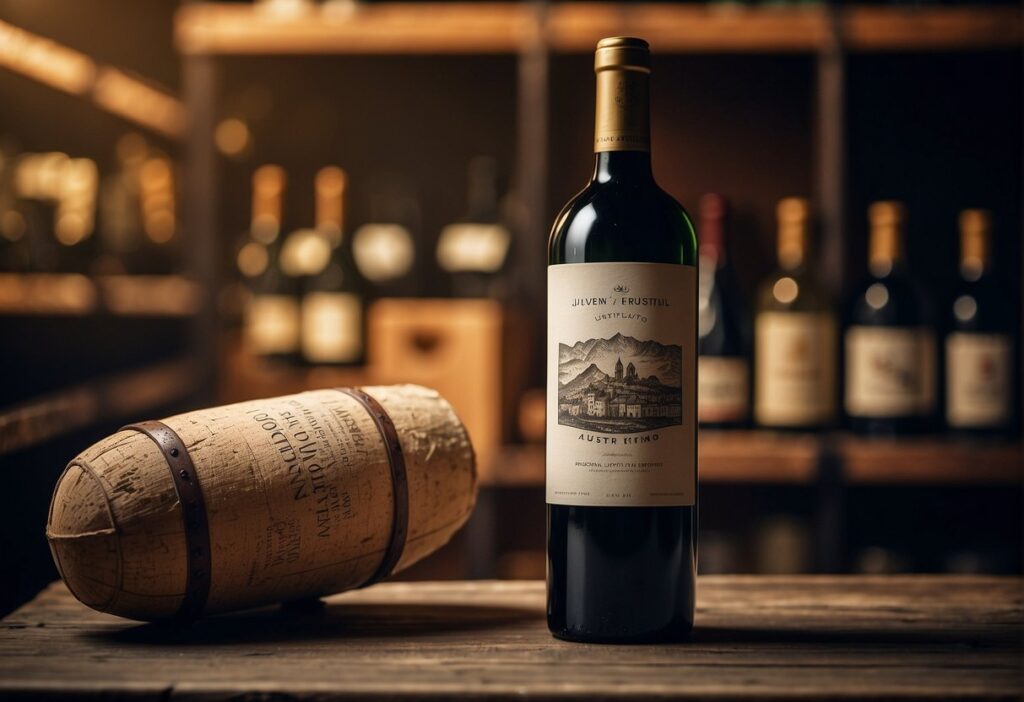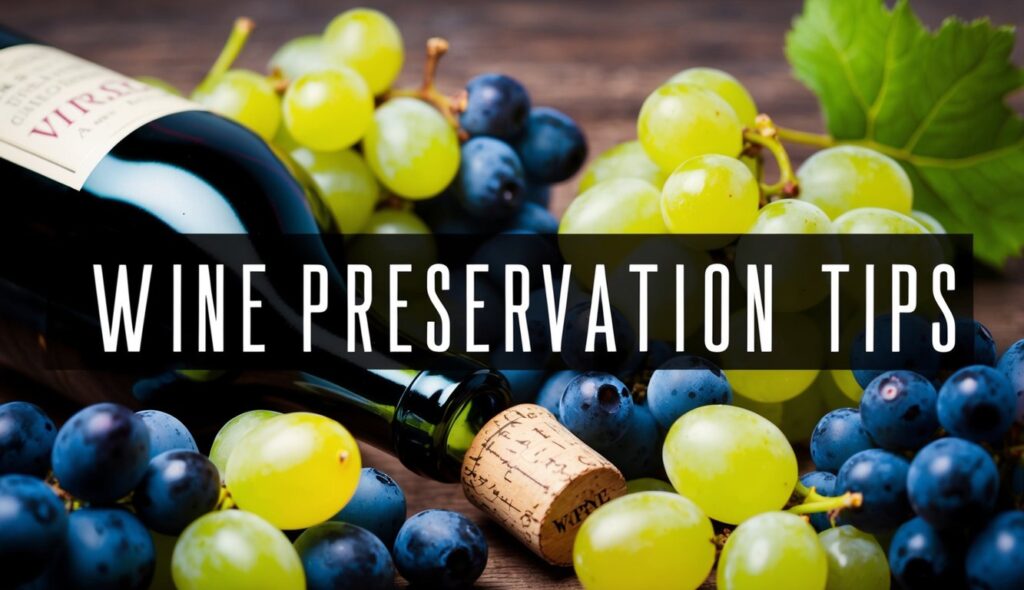Wine storage is more than just placing bottles on a shelf. It involves careful attention to preserve the quality and flavors of your favorite wines. Heat, light, oxygen, and vibration are the main enemies of stored wine. To keep your wine in the best condition, you must limit exposure to these elements.

A common wine storage mistake is failing to control temperature. Storing wine in a warm environment can cause it to lose its aromas and flavors. It’s essential to maintain a temperature of 70 degrees Fahrenheit or below to prevent damaging your wine.
Moreover, a wrong storage position can affect wine quality. Keeping wine bottles horizontal allows the cork to stay moist, preventing unwanted air from entering the bottle.
Avoid these mistakes to ensure your wine remains a pleasurable experience for years to come. Understanding how to properly store wine not only preserves its quality but also enhances your overall tasting experience. Investing time and care into wine storage will save you from the disappointment of a spoiled bottle.
Essential Principles of Wine Storage
Storing wine properly is crucial to preserving its quality and flavor. Key principles include maintaining a stable temperature, controlling humidity levels, and preventing light exposure.
Understanding Temperature Impact
Temperature plays a vital role in wine storage. The ideal storage temperature for wine is typically between 45°F and 65°F (7°C and 18°C). More important than the exact temperature is avoiding fluctuations. Frequent temperature changes can cause the liquid to expand and contract, leading to potential damage to the cork.
Consistent temperature helps in maintaining the taste and aroma of the wine. Your wine should be stored in a place where temperature changes are rare. A wine fridge or a cellar offers better temperature control than a regular fridge.
Significance of Humidity Control
Humidity control is essential in wine storage to protect the cork and the labels. Ideally, the humidity level should be between 50% and 80%. If the humidity is too low, the cork might dry out, allowing air to enter the bottle, which can spoil the wine.
On the other hand, too much humidity can promote mold growth on the cork and labels. Investing in a hygrometer can help monitor and adjust the humidity levels in your storage area to keep your wine protected. Using preventative measures ensures that both your wine and its presentation are preserved.
Effects of Light Exposure
Light, especially sunlight, can be detrimental to wine. UV rays can degrade and prematurely age the wine, affecting its flavor and aroma. It’s important to store wine in a dark space to limit light exposure that could harm it.
If natural light cannot be avoided, consider using UV-filtering glass or covering the bottles with cloth. Wherever possible, use low-intensity light in your storage area. This precaution will help in preserving the wine’s integrity for the long term, making your wine experience much better.
Selecting the Right Wine Storage Solutions
Choosing the best wine storage can impact how well your wine ages and how it tastes. Different options for storing wine serve different needs, such as wine racks, wine fridges, or professional storage. Understanding these choices helps you keep your wine in top condition.
Types of Wine Racks and Their Uses
Wine racks are popular because they are simple and effective. Wooden wine racks are classic and add a touch of elegance to any room. They are great for storing bottles on their sides, which keeps corks moist. Metal racks are sturdy and can offer a modern look.
Wall-mounted racks save space and can turn your wine collection into a piece of art. These are perfect for those with limited floor space. Freestanding racks are versatile, providing easy access and being portable. They come in many sizes to fit your needs. Selecting the right wine rack depends on the size of your collection and the space you have available.
Benefits of Wine Fridges and Coolers
Wine fridges and coolers regulate temperature better than regular refrigerators. They maintain a consistent climate essential for preserving wine’s flavor and aroma. Dual-zone wine fridges allow you to store reds and whites at their optimal temperatures in the same unit.
Having a wine fridge means you can manage humidity levels too. This is crucial because too much or too little humidity can damage corks and labels. Compact wine coolers are an excellent choice if you’re short on space, fitting easily under counters or in tight spots. Choosing a wine fridge can protect your investment and enhance your wine enjoyment.
Professional Wine Storage Services
For serious collectors, professional wine storage services offer climate-controlled environments. These facilities provide security and optimal conditions for your wine’s long-term aging. They cater to those who either lack space or want the most precise conditions for aging their wines.
Temperature-controlled units that some services offer mimic the conditions of a wine cellar. They also often provide insurance for your collection. This peace of mind is invaluable for valuable or rare wines. Professional storage ensures that wines age gracefully and remain unharmed by environmental fluctuations.
Common Wine Storage Mistakes to Avoid

Storing wine improperly can ruin even the best bottles. It’s important to be aware of mistakes like incorrect temperature settings, exposure to light, and wrong bottle placement, which can affect the quality of your wine over time.
Poor Temperature and Humidity Management
Temperature is a critical factor when storing wine. If wine is kept too warm, it can age too quickly, leading to unwanted flavors. On the other hand, if it’s too cold, it might slow down the aging process. Maintaining a consistent temperature between 45-65°F is ideal.
Humidity levels are equally important to keep the cork from drying out. If the cork dries, it can allow oxygen inside the bottle, causing oxidation. Aim for humidity levels of 60-70% to ensure the cork remains moist and tight.
Inadequate Protection from Light and Vibration
Direct light exposure can be harmful to wine. UV rays can degrade and age wine prematurely. It’s best to store your bottles in a dark or dimly lit place.
Vibration is another concern as it disturbs the wine’s sediment, which can spoil the drink over time. Avoid storing bottles near appliances that create constant movement like refrigerators. Instead, use a stable spot, such as a dedicated wine cellar or cooler, to keep the wine still and safe.
Mistakes in Wine Bottle Orientation
The way you position your wine bottles matters. Horizontally stored bottles keep the wine in contact with the cork, preventing it from drying out. This orientation is crucial for wines with cork closures, as a dry cork allows air to seep in, leading to oxidation.
Upright storage can dry out the cork over time, which is why it’s not recommended for long-term storage. However, screw-capped bottles or those for short-term use are less affected by position.
Neglecting the Aging Process
Not considering the aging potential of your wine is a common mistake. Some wines are made to be consumed young, while others require aging to develop their flavors. Knowing the wine’s characteristics helps avoid premature consumption or over-aging.
Store wines intended for aging under consistent conditions to allow them to develop their full potential. If you’re uncertain about the wine’s aging process, it’s wise to consult a resource or professional for guidance to avoid alcohol storage mistakes and wasting a good investment.
Strategies for Long-Term Wine Storage

Storing wine for the long-term involves creating the right conditions and keeping accurate records. Both these strategies ensure your wine retains its quality as it ages.
Creating Optimal Conditions for Aging
To ensure your wine ages gracefully, you need to maintain the right temperature and humidity. Keeping the wine at a stable temperature between 45-65 degrees Fahrenheit is crucial. Sudden changes can negatively impact the wine’s flavor and aroma.
Humidity should stay between 50% to 70%. This prevents the cork from drying out and letting in unwanted air.
Positioning your wine bottles horizontally is key. This keeps the cork moist, which is important for maintaining a good seal. Protecting wine from light is also vital. Even indirect sunlight can alter the structure and balance of tannins, affecting the aging process significantly. Vibration is another enemy of wine, as it can disturb the sediments that develop over time, affecting clarity and flavor.
Maintaining Provenance and Record Keeping
Provenance refers to the history and origin of your wine. Keeping track of where and when you purchased each bottle is essential. Detailed records help maintain the value and authenticity of your collection.
Use a wine inventory system or software to log critical details like purchase date, price, and ideal drinking window.
Proper record-keeping allows you to monitor your collection’s condition over the years. Recording storage conditions, like temperature and humidity levels, is equally important. You can then make adjustments as needed to protect your investment. Keeping all this information organized ensures you have a clear understanding of both short-term and long-term wine storage needs.
Handling and Accessing Your Wine Collection

Properly handling and accessing your wine collection is crucial for maintaining the quality and enjoyment of your wines. Key practices include organizing your bottles for easy access and regularly inspecting them to ensure they remain in optimal condition.
Organizing Your Collection for Ease of Access
When organizing your wine collection, create a system that suits both your personal preferences and practical needs. Using wine racks or storage boxes with dividers can help keep your wines categorized.
Organize by type, region, or age to streamline your selection process. Label shelves or sections to quickly find a desired bottle.
For larger collections, digital tools or apps can track inventory and suggest pairings. A wine subscription service might provide new varieties that require special attention. Accessibility is key, so ensure frequently consumed favorites are easy to reach, while long-term bottles are safely stored.
The Importance of Regular Inspection
Regular inspection is essential for preserving the quality of your wine bottles. You should check each bottle for signs of leakage, cork issues, or label damage.
Inspecting corks ensures they remain moist and airtight. A dry cork can lead to oxidation, risking the wine’s quality.
Keep an eye on temperature and humidity levels to maintain ideal conditions. Fluctuations can impact both wine taste and longevity.
You can use a thermometer and hygrometer to monitor these factors closely. This proactive approach not only safeguards your collection but also enhances your experience as a wine drinker.

